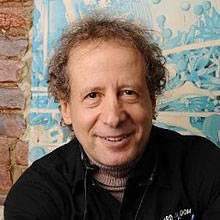|
||||||||||
| Summary and commentary by Kimberly Baxter | ||||||||||
This has been true for millennia. Koenigsberg reminded listeners that for the most part, soldiers who were involved in killing during World War I did not see their victims: they were shooting machine guns and artillery shells and did not have close encounters with the deaths they caused. Thus, Koenigsberg argued, they were not motivated by visceral enjoyment of perpetrating bloodshed. Invoking Horace’s phrase, “It is sweet and honorable to die for one’s country,” he suggested that sacrificial ideology is at the “core of Western civilization.” However, Koenigsberg also finds non-Western examples of this ideology, which indicates that the masochistic phenomenon he has identified may be a universal human propensity. To support his hypothesis, Koenigsberg cited the ancient Aztec culture, for whom the goal of war was not to only to win, but to acquire sacrificial victims. The Aztecs conducted “flowery wars”—rituals with equal numbers of troops on both side—to fulfill a perceived need for sacrificial victims to appease the gods, after they had conquered all the surrounding territories (combat training was a secondary reason for these ritual wars). This preoccupation with sacrifice was a contributing factor in Cortez’s triumph. The Aztecs were focused on procuring live sacrificial victims: transporting Spanish victims to be sacrificed. The compulsion to sacrifice Spanish victims consumed their energy and time, distracting the Aztecs from the task of “winning.” Despite being hugely outnumbered, Cortez conquered their empire. His tenacity that led to his victory in the face of seemingly insurmountable odds reflected his own willingness to sacrifice for the Spanish crown. There is always something in the name of which people are dying—something that is worshipped that justifies killing; it is always moral. For Hitler, it was Germany; for the Aztecs, it was the Sun God; for George W. Bush, it was freedom & democracy; for martyrs in the Middle East, it is Allah. Sacrifice is a bonding mechanism that validates the entity for which the sacrifice is made. Koenigsberg explained the psychological mechanism: If you believe in something enough to sacrifice your life for it, the superordinate object you believe in must be real. After the Vietnam War, the sacrificial mechanism in this country deteriorated. Koenigsberg alluded to a “counter-sacrificial culture of the 1990s”: reluctance to sacrifice. George W. Bush tried to overcome this sensibility--persuading Americans to relearn how to sacrifice—in the Iraq War. Koenigsberg explained how Japan’s 1905 victory in the Russo-Japanese War influenced European military strategists in World War I. They admired the Japanese soldiers’ spiritual willingness to sacrifice their lives. In Japanese culture, the purpose of war is not winning, but sacrificing. Their willingness to die for the Emperor was ingrained: The rallies Hitler conducted to generate a frenzy of nationalistic enthusiasm was not necessary in Japan. But Koenigsberg noted that although Europeans are less self-aware than the Japanese that sacrifice is the purpose of war, Westerners have been the most prodigious dyers, in World Wars I and II. Koenigsberg suggested that Westerners have the illusion that they are rational because they no longer die for religion. But we still have an object that we religiously worship (the country) that has not yet been deconstructed. Ernst Kantorowicz argued that martyrdom for the church transformed into martyrdom for the state. Hitler fulfilled Saint Paul’s fantasy of many becoming one in the body of the church, with the German body politic. Everyone became a part of something higher than him- or herself. In Hitler’s mind, Jews did not love Germany enough. Koenigsberg suggested that Hitler became “the greatest sacrificer of all time” because he thought it was necessary to resurrect Germany’s greatness. He viewed Jews the way militant Islamists view Westerners, as the infidels who must be destroyed. He also used the metaphorical idea of a bacteria or virus, a force that was causing the decomposition (Zerzetzung) of the nation. He and Goebbels were a paranoid. They believed the Jews were all powerful; that they would destroy Germany if Germany did not destroy the Jews first. Thus, he did not attack the Soviet Union primarily with the objective of conquering it. In his mind, he was acting defensively. There is a dialectic between the impulse for freedom and the impulse toward submission. Islamic men may have a desire for freedom that they are trying to suppress it, and they project it onto the enemy, the infidels. Likewise, Westerners may have a desire to submit to the will of others—the opposite of the desire for freedom. Hitler had this dialectic within himself. He felt oppressed by Germany because of the sacrifices that he was required to make” to devote himself entirely to the nation in his role as leader. The fact that he didn’t get married until Germany lost the war is evidence of his devotion. Hitler projected his own desire for freedom onto the Jews. In destroying them, he was fighting his own wish to abandon Germany—to be free of the burden of leading his country. Jews symbolized Hitler’s own wish to separate from Germany. Dougatz argued that civilization is a “mandate.” But Koenigsberg noted that so-called “civilization” can be the source of horrific carnage, as in World War I. An idea can be psychotic and totally wrong even though an entire society embraces it. Diverting massive resources to projects that seem important but are in fact useless is an ancient practice in Western culture. You can have laws and structures that guide your existence (i.e. civilization) without having this thing (the state) that you must die for. Bloom asked, what are other ways that people can connect and relate to each other if we transcend sacrifice as a bonding mechanism? The Internet empowers us to create new ways of connecting. People have a psychological need to look to the center as something they strive to connect with. But each of us can create our own center rather than looking to the nation as the center and source of meaning. |
||||||||||



 Kimberly Baxter is adjunct philosophy professor at CUNY John Jay College of Criminal Justice. She earned her Ph.D in Philosophy from New School University.
Kimberly Baxter is adjunct philosophy professor at CUNY John Jay College of Criminal Justice. She earned her Ph.D in Philosophy from New School University.